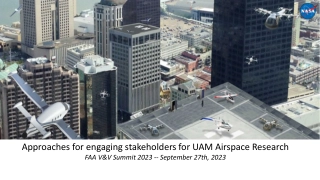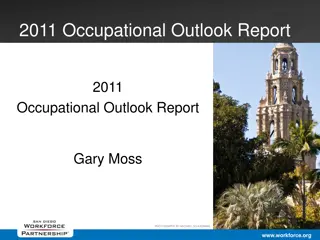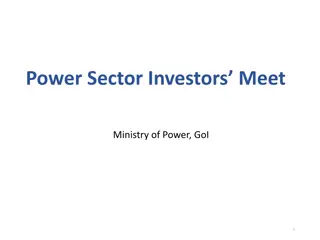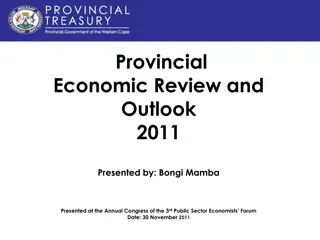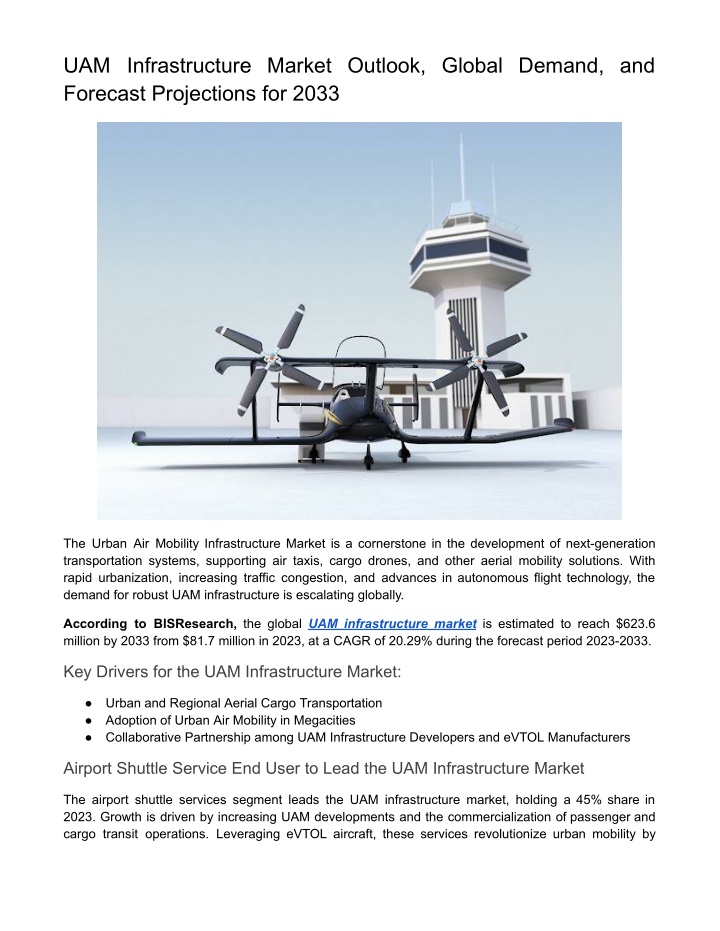
UAM Infrastructure Market Outlook, Global Demand, and Forecast
The global UAM infrastructure market is estimated to reach $623.6 million by 2033 from $81.7 million in 2023, at a CAGR of 20.29% during the forecast period 2023-2033.nnRead Report Overview: //bisresearch.com/industry-report/uam-infrastructure-
Download Presentation

Please find below an Image/Link to download the presentation.
The content on the website is provided AS IS for your information and personal use only. It may not be sold, licensed, or shared on other websites without obtaining consent from the author. If you encounter any issues during the download, it is possible that the publisher has removed the file from their server.
You are allowed to download the files provided on this website for personal or commercial use, subject to the condition that they are used lawfully. All files are the property of their respective owners.
The content on the website is provided AS IS for your information and personal use only. It may not be sold, licensed, or shared on other websites without obtaining consent from the author.
E N D
Presentation Transcript
UAM Infrastructure Market Outlook, Global Demand, and Forecast Projections for 2033 The Urban Air Mobility Infrastructure Market is a cornerstone in the development of next-generation transportation systems, supporting air taxis, cargo drones, and other aerial mobility solutions. With rapid urbanization, increasing traffic congestion, and advances in autonomous flight technology, the demand for robust UAM infrastructure is escalating globally. According to BISResearch, the global UAM infrastructure market is estimated to reach $623.6 million by 2033 from $81.7 million in 2023, at a CAGR of 20.29% during the forecast period 2023-2033. Key Drivers for the UAM Infrastructure Market: Urban and Regional Aerial Cargo Transportation Adoption of Urban Air Mobility in Megacities Collaborative Partnership among UAM Infrastructure Developers and eVTOL Manufacturers Airport Shuttle Service End User to Lead the UAM Infrastructure Market The airport shuttle services segment leads the UAM infrastructure market, holding a 45% share in 2023. Growth is driven by increasing UAM developments and the commercialization of passenger and cargo transit operations. Leveraging eVTOL aircraft, these services revolutionize urban mobility by
offering swift, eco-friendly airport transportation. Passengers can bypass traditional ground transport and board eVTOLs that efficiently navigate urban airspace. Dedicated airports and helipads near major airports enhance convenience, blending the agility of helicopters with the sustainability of electric propulsion for seamless travel. Challenges for the UAM Infrastructure Market Constraints in Navigation and Communication Infrastructure Supporting UAM Public Acceptance of UAM Services Lack of Electrical Infrastructure for UAM Charging Real Estate and Financing Challenges in Developing UAM Infrastructure UAM Infrastructure Market by Region The U.S. is the fastest-growing market for UAM infrastructure, with a CAGR of 21.43%. Supported by a favorable regulatory framework, extensive R&D investments, and a robust urban economy, the U.S. is set to become one of the largest global markets. Home to leading eVTOL developers like Archer Aviation, Joby Aviation, and Wisk Aero, the country leads in prototype advancements and certifications. With over $5 billion invested worldwide in UAM development, the U.S. accounts for the largest share, making it a potential multi-billion-dollar market. Key Trends in the UAM Infrastructure Market: Urban Passenger Air Metro: Urban passenger air metro offers an alternative mode of transport by utilizing airspace to alleviate traffic congestion and provide rapid transit options for well-off urban dwellers. Many eVTOL players are primarily focusing on addressing this market. Operational Environment: The operational environments of UAM pose unique challenges due to the presence of low altitude operations constraints and dense buildings. Low altitude operations constraints encompass various factors such as limited airspace availability, high population density, and complex urban infrastructure. These constraints necessitate the development of sophisticated flight management systems. Configuration Decisions: The redundancy factor will influence the decision to bring about multiple drop-off points in an urban air transit route, and the point should be configurable to be adept for servicing hybrid systems that can require refueling/charging. Opportunities for the UAM Infrastructure Market: Increasing Infrastructure Demand for UAM Operations Repurposing Existing Aviation Infrastructure into Vertiport Hubs According to Principal Analyst at BIS Research The unmanned industry has experienced remarkable growth in recent years, driven by the expanding use of unmanned platforms across diverse applications. This trend creates a significant opportunity to develop robust and interconnected UAM infrastructure for seamless operations in urban environments. Countries like the U.S., Japan, Australia, and Germany are witnessing continuous expansion of UAM infrastructure, supported by their large urban populations, strong economic potential, and favorable business ecosystems, positioning them as key players in the evolving urban air mobility landscape.

